History of British Letter Boxes- Part 2
1900 to 1999
In 1924 oval signs showing the direction to the nearest post office were used on top of pillar boxes for the first time. It was also in 1924 that the first experimental Telephone Kiosk no. 4
was produced which incorporated a post box and stamp vending machine.
Pillar boxes for airmail letters were introduced in London in 1930. The first of these was sited outside the General Post Office in King Edward Street, London. Originally these were simply a
type 'B' box painted blue with an oval sign saying AIR MAIL placed on top, but from 1932 they were produced with a double collection plate, one for collection times and one for air mail postage
rates. This service lasted until 1938 when the first box to be erected was also the last to go.
|
Figure 12.
K4 telephone kiosk incorporating a post box
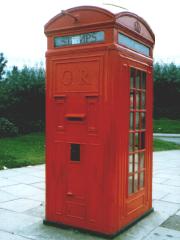
Photo copyright © Rosalind Wicks
|
Figure 13.
Air mail letter box with double collection plate
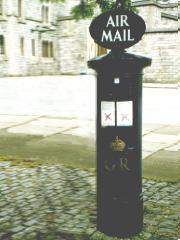
Photo copyright © Rosalind Wicks
|
Figure 14.
Direction sign on top of a type 'B' Edward VIII pillar box, 1936
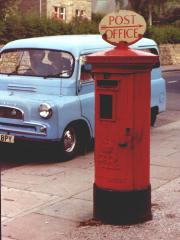
Photo copyright © Rosalind Wicks
|
During the short reign of Edward VIII in 1936 only a relatively small number letter boxes were made, with the larger type 'A' pillar box being much rarer than than the narrower type 'B'. It is
believed that there is only one surviving example of an Edward VIII Ludlow type letter box.
|
Figure 14.
Edward VIII Ludlow at Bawdsey, Suffolk.
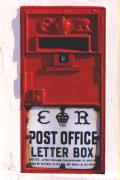
|
In 1935, towards the end of the reign of George V, a new design of lamp box was introduced with a flatter roof. Another design, with a rectangular front, was introduced during the reign of
George VI.
|
Figure 15.
Early lamp box
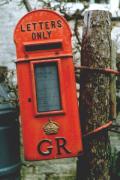
Photo copyright © Rosalind Wicks
|
Figure 16.
Later lamp box
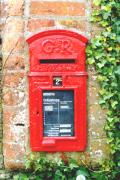
Photo copyright © Rosalind Wicks
|
Figure 17.
Third type of Lamp box
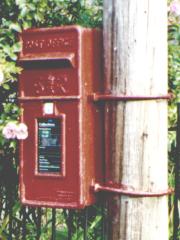
Photo copyright © Rosalind Wicks
|
In 1954, after it had been pointed out that Elizabeth II of England was only the first Elizabeth to reign over Scotland, the EIIR cipher was not used in Scotland. Letter boxes
were made with just a Scottish Crown on instead.
There was very little further change in the design of letter boxes until an experiment in 1968 with rectangular boxes (Type F). These were made from sheet steel and proved not to be very hard
wearing and so a cast iron version, the Type G, was introduced.
For their next design in 1979 the Royal Mail went back to the cylindical shape, this time without the familiar pillar box cap. This box is known as Type K. Finally, on modern postboxes the
words POST OFFICE have been replaced by the words ROYAL MAIL.
|
Figure 18.
Scottish pillar box
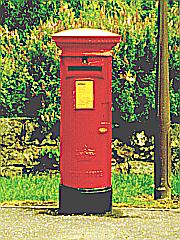
Photo copyright © Rosalind Wicks
|
Figure 19.
Type F
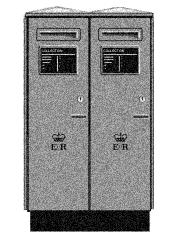
Photo copyright © Richard P Wicks
|
Figure 20.
Type G
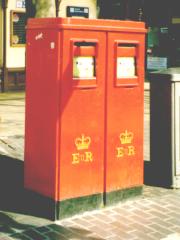
Photo copyright © Rosalind Wicks
|
|
Figure 21.
Type K Pillar Box
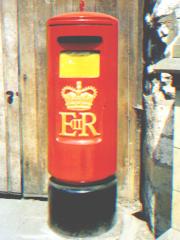
Photo copyright © Rosalind Wicks
|
Figure 22.
Type M Letter Box
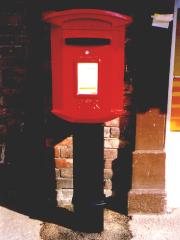
Photo copyright © Richard P Wicks
|
Figure 23.
Royal Mail (Type C) Pillar Box
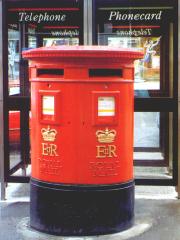
Photo copyright © Rosalind Wicks
|
[Contents] [Next]
Copyright © Paul Wicks 2002












